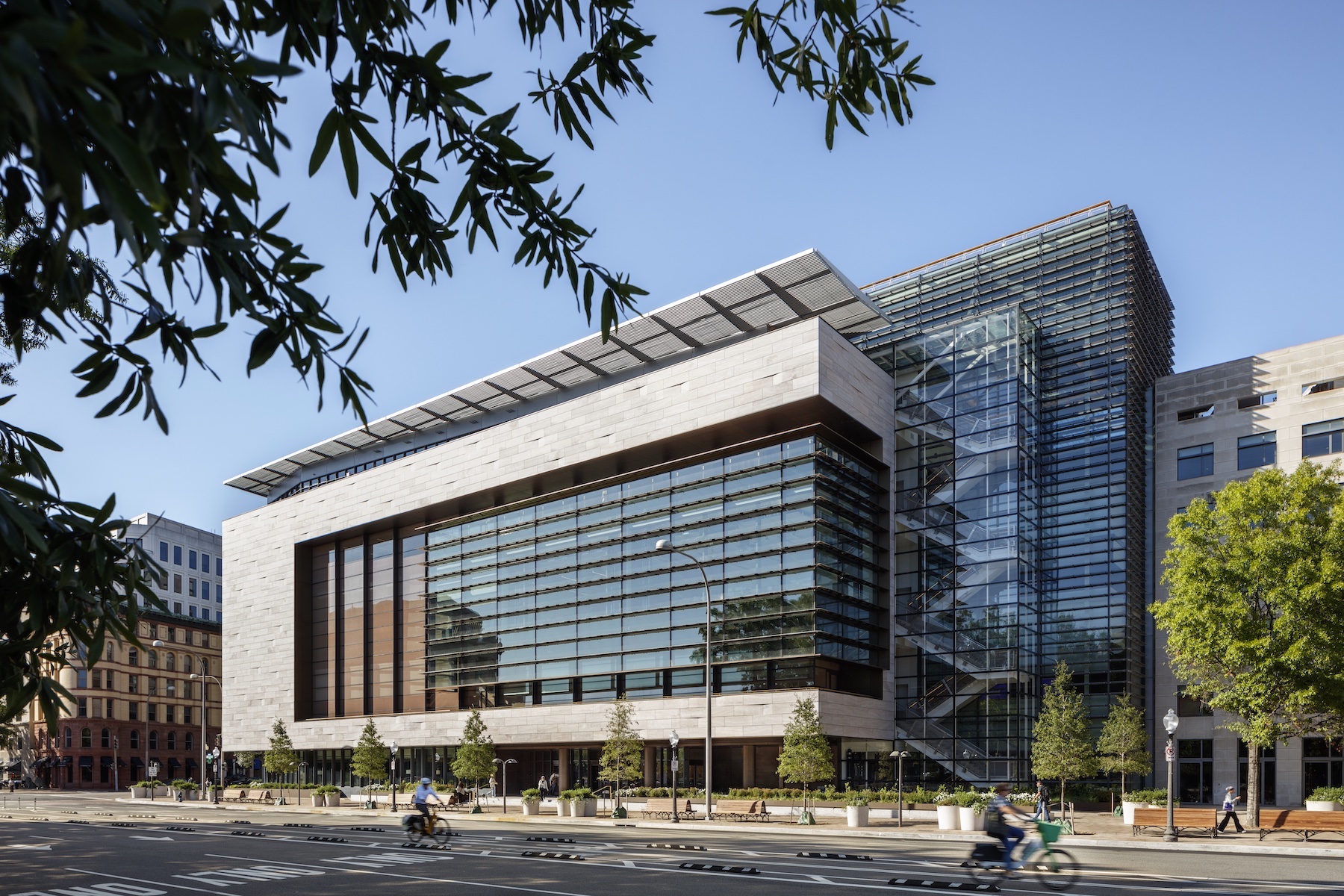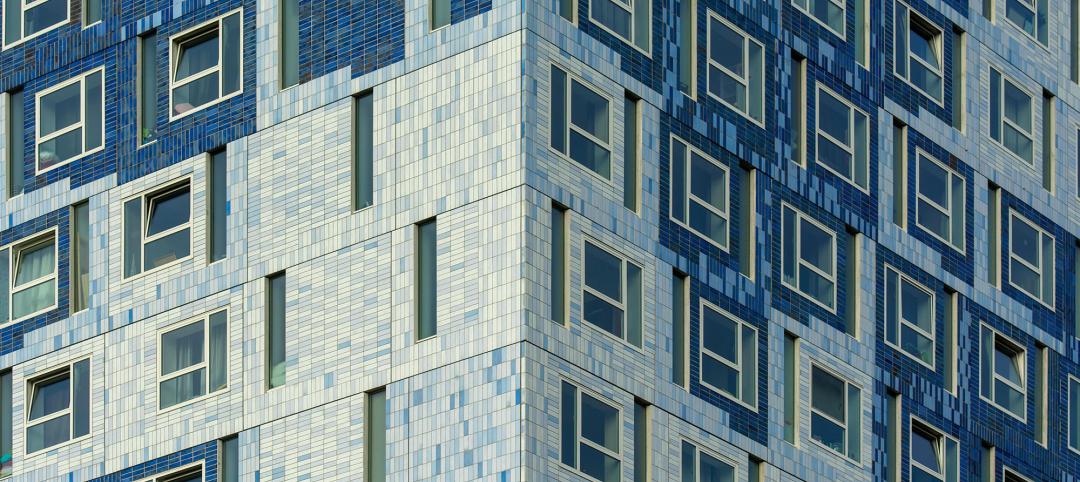In June 2020, Johns Hopkins University completed its $372.5 million acquisition of the Newseum in Washington, D.C., which had closed the year before. A $275 million renovation of that building resulted in the Johns Hopkins University Bloomberg Center, a higher education facility that brings together many of the university’s divisions within a building redesigned as a vertical campus for transparency and sustainability.
The 435,000-ft facility opened last August at 555 Pennsylvania Avenue at the heart of the nation’s capital. It is anchored by Johns Hopkins’ School of Advanced International Studies, its Carey Business School, its Krieger School of Arts and Sciences, the Peabody Institute, and the newly launched School of Government and Policy. The Center’s mission, stated Johns Hopkins, is to “connect the worlds of research and policy, educate future leaders and innovators, convene a range of viewpoints to foster discovery and dialogue, and bring a fresh infusion of artistic expression.”
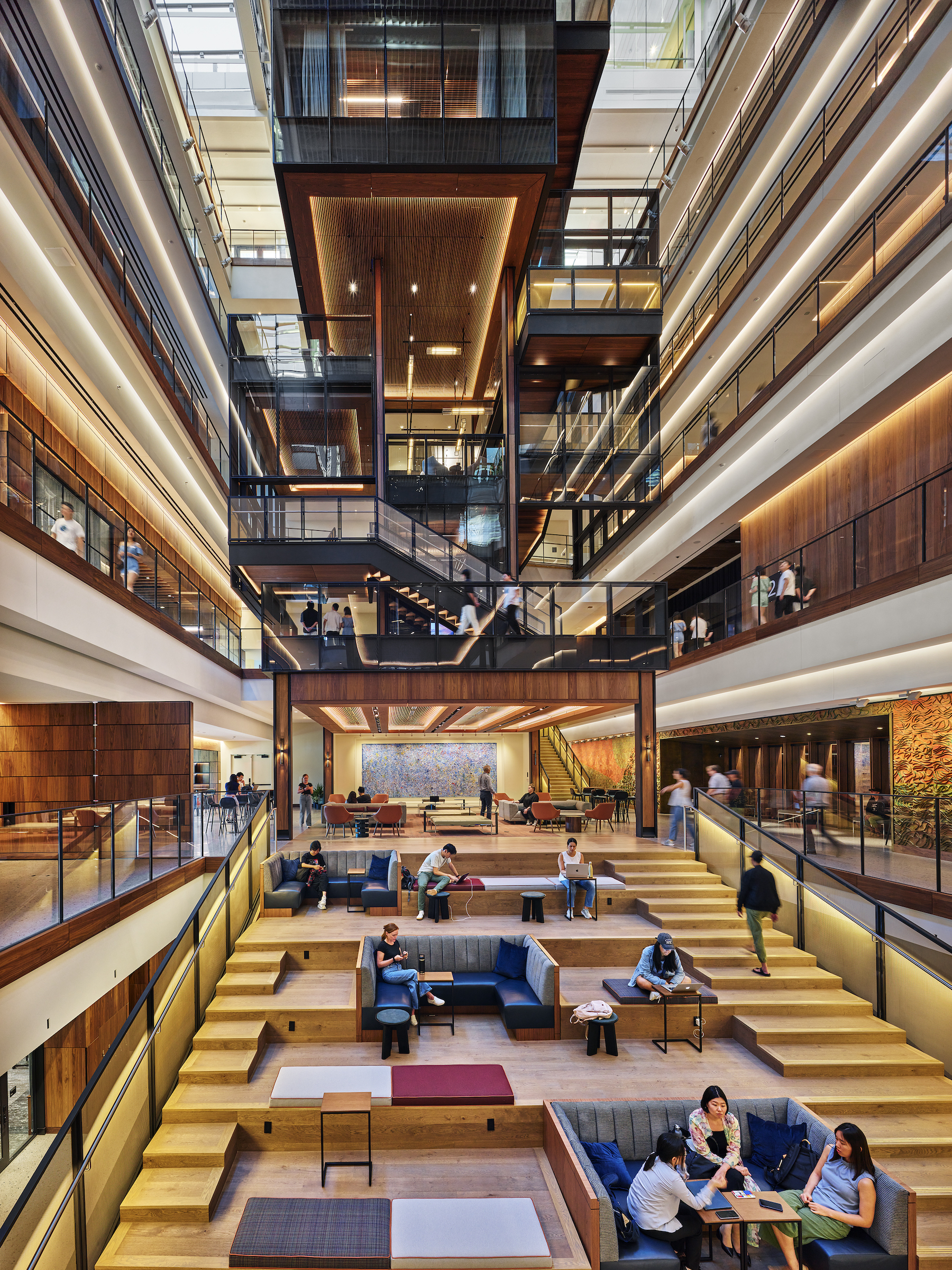
More than 3,000 students, faculty, researchers, and staff come through this 10-story building daily. The Center allocates 300,000 sf of its interior space to learning, with 38 high-tech classrooms of varying capacities. On the east side of the building’s seven-story-tall interior atrium, a 20x27-ft “floating” glass classroom hangs from a pair of bridge girders. On the west side of the atrium rises a 70-ft treehouse-like stacked assemblage of classrooms and open lounges.
The atrium is anchored by a sloped seating area called The Beach, a nod to the grassy space at Johns Hopkins’ Homewood campus in Baltimore.
Ennead gets another shot at an old project
Inside the Center as well are the Irene and Richard Frary Library on its second floor, an event space called The Link on its fourth floor, a 3,350-sf multimedia suite, a fitness and wellness center, a lounge with 435 seats, and a 375-seat theater with a 640-sf stage and 7,000 sf of backstage support. Space has been earmarked for a future restaurant and café.
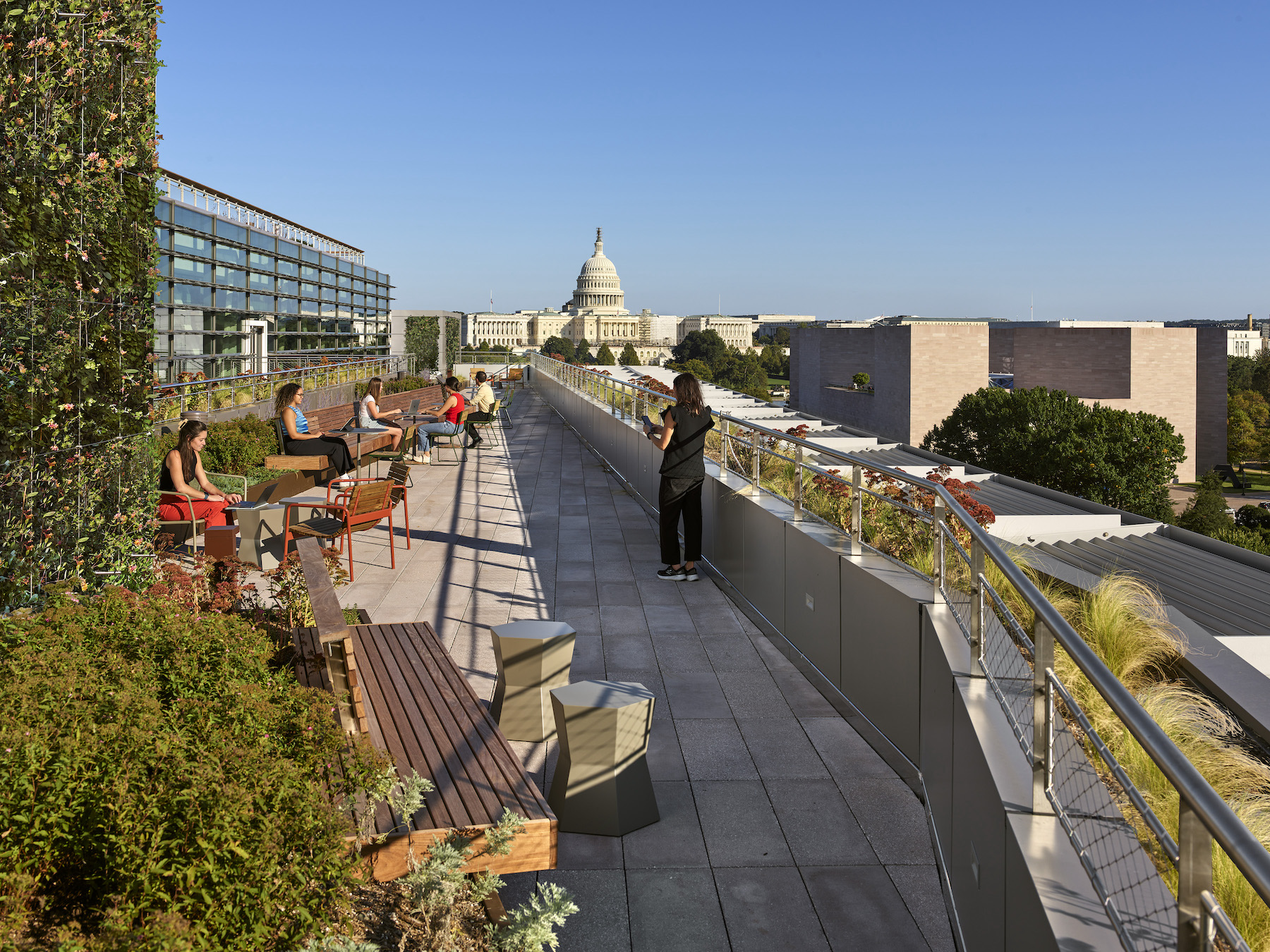
The building’s exterior is encased in an enlarged glass façade and a 50-ft curtainwall that faces Pennsylvania Avenue; pink marble cladding, and 16,888 sf of roof terraces. “As architects, it is a rare opportunity to revisit an earlier design and reimagine it for an entirely new purpose,” said Richard Olcott, FAIA FAAR, Design Partner at Ennead Architects, this Center’s exterior architect, and the original architect of the Newseum.
This project’s building team also included SmithGroup (AOR, lighting design, fire protection, life safety engineering), Rockwell Group (interior architect), Clark Construction (GC), Wiles Mensch (CE), LERA Consulting Structural Engineers (SE), WSP (MEP engineer, fire protection, life safety engineer), Oehme, van Sweden (landscape architect), Babich Acoustics (acoustics), and BrightTree Studios (A/V). MGAC provided project and cost management support.
A reduced carbon footprint
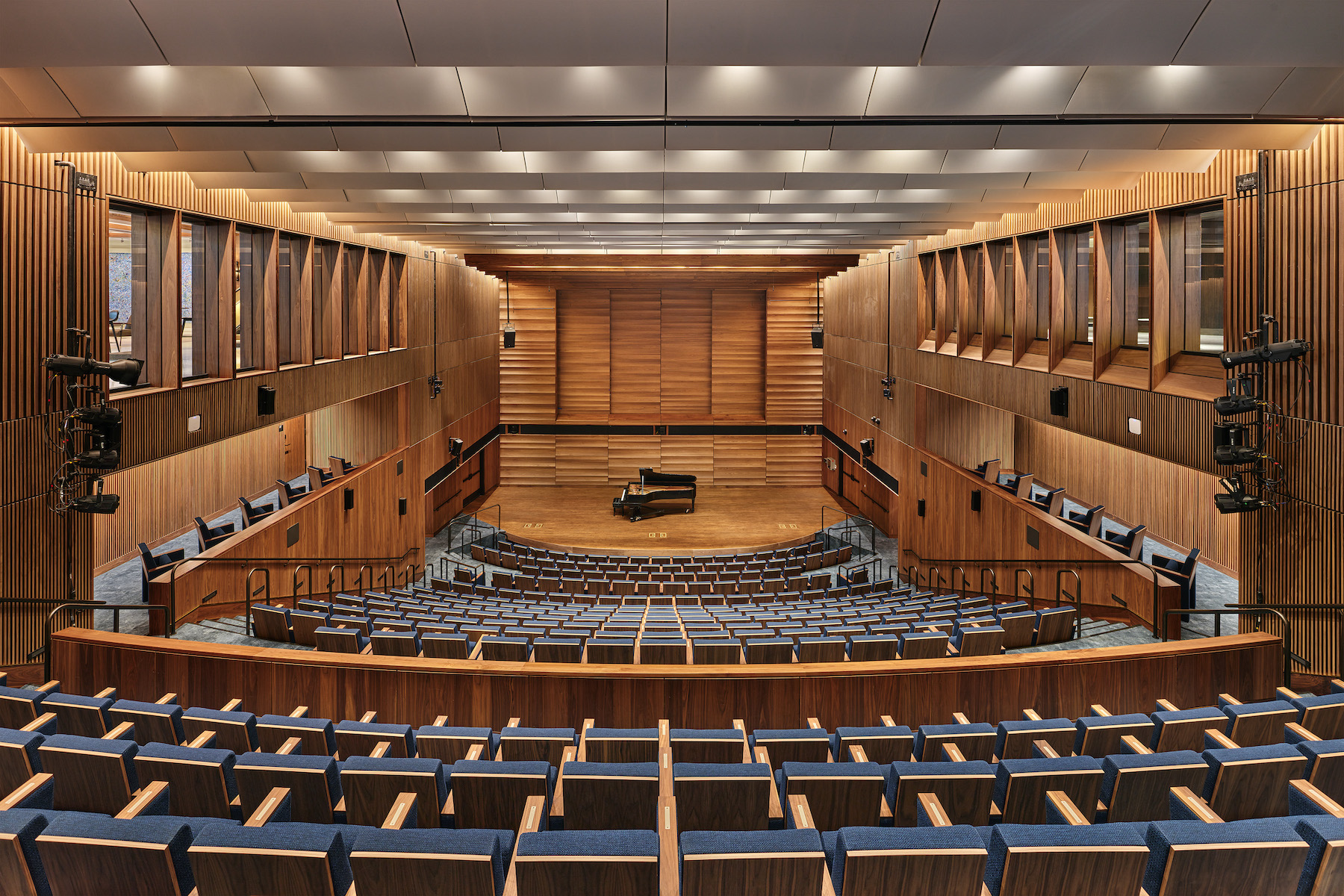
Concerning the atrium, Rockwell Group identifies two key insertions: the “Room Stair” that wraps around the building’s glass rooms and lounges; and the “Room Bridge” that houses classrooms and lounge spaces, and bridges both sides of the building.
The building team eliminated 77.8 tons of carbon dioxide from the construction process by using CarbonCure concrete. The team also recycled or diverted from landfills 96.6 percent of the project’s construction waste that, according to SmithGroup, included demolishing 50,000 sf of interior floorplates to make way for 90,000-sf floorplates, and removing the Newseum’s marble exterior panels.
Related Stories
Mass Timber | Apr 25, 2024
Bjarke Ingels Group designs a mass timber cube structure for the University of Kansas
Bjarke Ingels Group (BIG) and executive architect BNIM have unveiled their design for a new mass timber cube structure called the Makers’ KUbe for the University of Kansas School of Architecture & Design. A six-story, 50,000-sf building for learning and collaboration, the light-filled KUbe will house studio and teaching space, 3D-printing and robotic labs, and a ground-level cafe, all organized around a central core.
Student Housing | Apr 17, 2024
Student housing partnership gives residents free mental health support
Text-based mental health support app Counslr has partnered with Aptitude Development to provide free mental health support to residents of student housing locations.
Student Housing | Apr 12, 2024
Construction begins on Auburn University’s new first-year residence hall
The new first-year residence hall along Auburn University's Haley Concourse.
University Buildings | Apr 10, 2024
Columbia University to begin construction on New York City’s first all-electric academic research building
Columbia University will soon begin construction on New York City’s first all-electric academic research building. Designed by Kohn Pedersen Fox (KPF), the 80,700-sf building for the university’s Vagelos College of Physicians and Surgeons will provide eight floors of biomedical research and lab facilities as well as symposium and community engagement spaces.
Architects | Apr 2, 2024
AE Works announces strategic acquisition of WTW Architects
AE Works, an award-winning building design and consulting firm is excited to announce that WTW Architects, a national leader in higher education design, has joined the firm.
Student Housing | Mar 27, 2024
March student housing preleasing in line with last year
Preleasing is still increasing at a historically fast pace, surpassing 61% in February 2024 and marking a 4.5% increase year-over-year.
Lighting | Mar 4, 2024
Illuminating your path to energy efficiency
Design Collaborative's Kelsey Rowe, PE, CLD, shares some tools, resources, and next steps to guide you through the process of lighting design.
Student Housing | Feb 21, 2024
Student housing preleasing continues to grow at record pace
Student housing preleasing continues to be robust even as rent growth has decelerated, according to the latest Yardi Matrix National Student Housing Report.
University Buildings | Feb 21, 2024
University design to help meet the demand for health professionals
Virginia Commonwealth University is a Page client, and the Dean of the College of Health Professions took time to talk about a pressing healthcare industry need that schools—and architects—can help address.
Higher Education | Feb 9, 2024
Disability and architecture: ADA and universal design at college campuses
To help people with disabilities feel part of the campus community, higher education institutions and architects must strive to create settings that not only adhere to but also exceed ADA guidelines.


